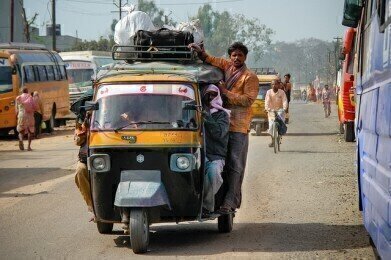Analytical Instrumentation
Are Fuel Prices Always in Line with Oil Prices?
May 24 2018
Since the oil market crashed in 2014, drivers have been enjoying relatively painless trips to the pump. Though things aren’t quite as sweet in India, where diesel, the country's most popular fuel, is pricier than ever. Gasoline is also threatening to hit record levels in a handful of major cities, including Delhi.
India's yo-yo pricing system
Four years ago, India lifted pricing controls on gasoline when the global oil slump pushed prices below set levels. The move was largely spurred by an attempt to relieve the enormous financial burden placed on the government by fuel subsidies, which had soared to US$9.6 billion in 2014. Several months later the government followed up by freeing diesel rates and calling off subsidies.
Local prices dropped, though the government continued to capitalise on the downward trend by adding an additional tax, as opposed to passing all savings onto the consumer. The taxes are still in place despite rising oil prices, which mean Indian drivers are feeling the pinch as Brent climbs above US$75 a barrel, the highest price point since November 2014.
Government under pressure to reinstate national cap
As a result, the government is under rising pressure to reintroduce a national cap on fuel prices. This could see India drastically cut fuel taxes, which currently account for around 50% of the per litre price drivers pay when filling up. Of course, this would represent a major loss to government revenues. Currently, the federal budget document predicts that excise duty and additional taxes will rake in roughly 2.5 trillion rupees, or US$36 billion, in the year ending March 2019.
The second, more viable option is to reinstate price controls on both petrol and diesel, either fully or partially. This would see the government ask upstream companies to share a portion of the burden and in turn, bring down prices at the pumps. For local drivers this could represent big savings, as most of India’s scooters, motorcycles and rickshaws run on diesel. It could also help support India's national economy, as higher diesel prices translate to higher freight costs, which are usually passed on to consumers.
As well as rising petrol prices, India also faces some of the world's worst urban air pollution levels. Recently, the nation signed an agreement in London that will see it aim to slash carbon dioxide emissions by at least 50% by 2050. For a closer look at the latest maritime developments don't miss 'Preparing for change: Positioning the Refining Industry to Tackle the IMO’s New Sulphur Regulations'
Digital Edition
PIN 25.1 Feb/March
March 2024
In This Edition Safety - The technology behind the ION Science Tiger XT - Safety with ammonia and LOHCs as hydrogen carriers Analytical Instrumentation - Discussion on new tribology te...
View all digital editions
Events
Apr 30 2024 Birmingham, UK
May 03 2024 Seoul, South Korea
May 05 2024 Seville, Spain
May 06 2024 Riyadh, Saudi Arabia
May 06 2024 Houston, Tx, USA


















